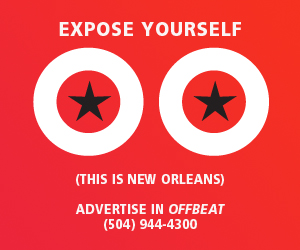After our news story on the successful effort of Creole Wild West Chief Howard Miller to copyright his suit, we received a number of comments and a lot of general concern about how this would affect photographers. Brian Moore wrote (in part):
Keaton couldn’t be more wrong about copyright law in a public setting, but what’s astonishing is how she’s wrong as a matter of morality. She’s essentially arguing that a copyright allows its owner to own your image of his copyrighted material. To put it bluntly, she’s saying you own how people look at you and how people choose to memorialize their images of you. It’s a ridiculous position bordering on the obscene.
Keaton responds:
This is not what I am saying at all. What I am saying is that a suit is a copyrightable work of art, and that in certain instances the underlying work qualifies another work as a derivative work. That’s all. I even went so far as to differentiate between images comprised of public events versus images comprised primarily of a work of art. How it plays out along the wide spectrum is ultimately going to be subject to interpretation by the authorities, I suppose, which I’ve also maintained. The whole point is that the suits are copyrightable, not that we won’t to flush photographers’ careers down the toilets. It’s not about photographers. It’s about a work being subject to copyright protection.
She also sent relevant parts of the act. The first parts are the basis for arguing that the Mardi Gras Indian suits are copyrightable.
§ 102. Subject matter of copyright: In general28
(a) Copyright protection subsists, in accordance with this title, in original works of authorship fixed in any tangible medium of expression, now known or later developed, from which they can be perceived, reproduced, or otherwise communicated, either directly or with the aid of a machine or device. Works of authorship include the following categories:
(5) pictorial, graphic, and sculptural works;
(6) motion pictures and other audiovisual works;
§ 106. Exclusive rights in copyrighted works38
Subject to sections 107 through 122, the owner of copyright under this title has the exclusive rights to do and to authorize any of the following:
(1) to reproduce the copyrighted work in copies or phonorecords;
(2) to prepare derivative works based upon the copyrighted work;
§ 113. Scope of exclusive rights in pictorial, graphic, and sculptural works47
(a) Subject to the provisions of subsections (b) and (c) of this section, the exclusive right to reproduce a copyrighted pictorial, graphic, or sculptural work in copies under section 106, includes the right to reproduce the work in or on any kind of article, whether useful or otherwise.
The question for photographers is whether or not their photographs are “derivative works” that themselves merit copyright protection. “Derivative works” are defined as:
a work based upon one or more preexisting works, such as a translation, musical arrangement, dramatization, fictionalization, motion picture version, sound recording, art reproduction, abridgment, condensation, or any other form in which a work may be recast, transformed, or adapted. A work consisting of editorial revisions, annotations, elaborations, or other modifications, which, as a whole, represent an original work of authorship, is a “derivative work”.
The question is whether or not the photographer sufficiently recasts, transforms or adapts the image, whether through the nature of the composition or the shot. “I interpret the law to provide that there can be some cases where photographs are substantially similar to the underlying work and amount to ‘slavish copying’of the work, the work being the suits,” Keaton says.
It isn’t clear how this question will play out in court. Lawyer William Patry, author of Moral Panics and the Copyright Wars and The Patry Copyright Blog argues that photographs are not derivative works, but the debate on the blog and in courts suggests that this issue remains unsettled. In one hypothetical, Patry seems to argue the Indians’ side:
Lets say one photographer (S. Levine, R. Prince) makes an exact duplicate of an earlier photographers’ work (W. Evans), and says this is my, derivative work because I am presenting it in a different context. I don’t think so. Nor do I think taking an exact photo of artwork on a motorcycle is. But, if I take a Walker Evans photograph, colorize it, crop it, and add a new character, I have made a derivative work.
If the photo’s appeal, content and reason for existing is the Walker Evans photograph – or Mardi Gras Indian costume – then there’s a photographer would have violated the copyright, he seems to say.
Keaton recognizes that consequences of copyrighting Mardi Gras Indian suits are uncertain:
Are the suits copyrightable? Yes. If so, are photographs derivative works? I argue yes in some cases, but that could be up for debate in the future. This issue has been avoided and skirted mostly, and addressed seldom, via the court systems, under various fact patterns without much consistency.




